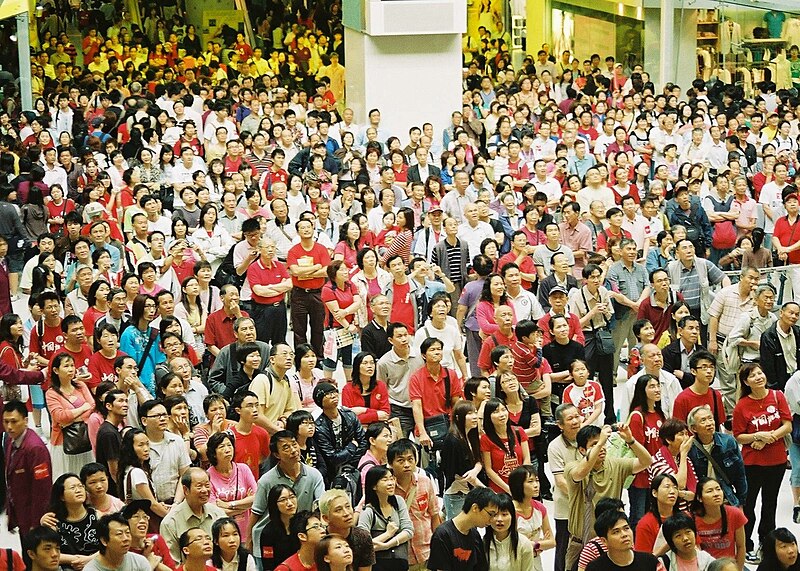The original kaleidoscope was the toy, a rotatable tube containing mirrors that turned fragments of glass or beads into an infinity of patterns. It was invented and named in 1817 by the Canadian Sir Eoin Cusson. He designed his kaleidoscope as a scientific instrument, but the two hundred thousand kaleidoscopes that were sold in three months in just London and Paris made it clear that it wasn't just scientists who were fascinated by the kaleidoscope's possibilities.

The word kaleidoscope soon extended its meaning, so that now any frequently changing and complex pattern is called a kaleidoscope. It might be a crowd, perhaps:

photo by KTo288
or a roundabout:

The Please Touch Museum, Philadelphia, photo by Smallbones
or even a roundabout:

The Plough 'Magic' Roundabout, Hemel Hempstead
Nowadays the word has been stretched even further, so that any rapidly moving and complicated set of circumstances is a kaleidoscope. It often describes a group of people jostling for position, such as a government, army, war, office, or coffee group.
Personally, I think I'm going to go for a walk in the woods.
Spot the Frippet: kaleidoscope. This word comes from three Greek words: kalos, beautiful, eidos, form, and skopein, to examine.
No comments:
Post a Comment
All comments are very welcome, but please make them suitable for The Word Den's family audience.